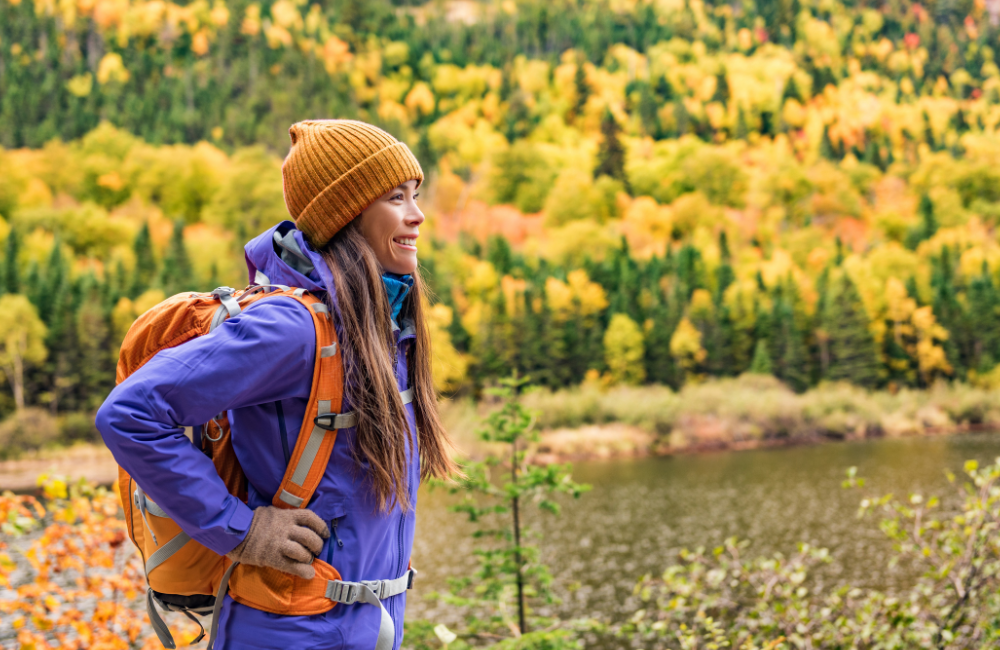Heading into the outdoors without preparation is a gamble.
That’s why packing an essential hiking survival kit is the difference between an unforgettable adventure and a miserable struggle.
Trails are unpredictable. Weather shifts, batteries die, and hunger strikes when you least expect it.
Over the years, I’ve learnt that a survival kit keeps you safe, comfortable, and free to actually enjoy the hike. From boots to snacks to emergency backups, here’s what I always pack and what I’d recommend for anyone stepping beyond the pavement.
Ready? Let’s roll.
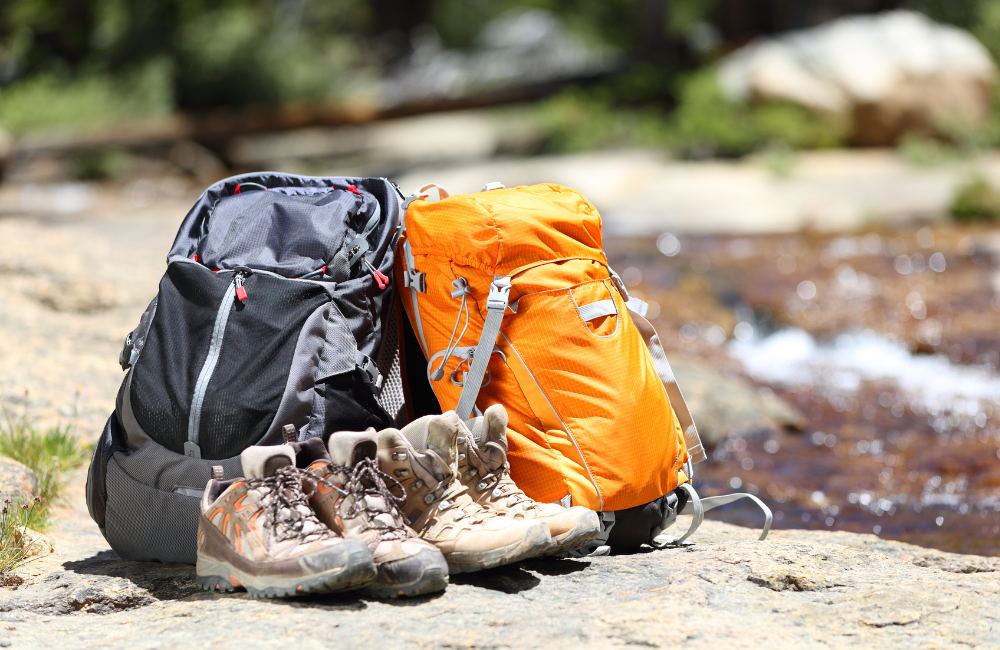
11 Items to Include in Your Hiking Survival Kit
Living with diabetes has taught me one thing above all: preparation isn’t optional.
On the trail, that lesson becomes twice as important. Putting together an essential hiking survival kit ensures I can handle the unexpected and still enjoy the adventure.
Over the years, I’ve fine-tuned my pack into a mix of safety gear, comfort items, and must-haves. Here are the 11 things I never step onto a trail without.
1. Clothing: Dress for the Unexpected
Layers are everything. Even in summer, I’ve started hikes in sunshine and ended them shivering under cloud cover.
Good hiking clothing means breathable, moisture-wicking base layers, a warm mid-layer, and a waterproof shell.
One underrated piece of advice? Don’t overlook camouflage or outdoor gear designed for durability and reliability. I’ve worn men’s camo clothes before.
Not for blending into the woods, but because they’re often tough, weather-resistant, and built to take a beating. Function over fashion, every time.
And on that topic, next up: footwear. Wet, blistering feet can ruin even the most beautiful trail.
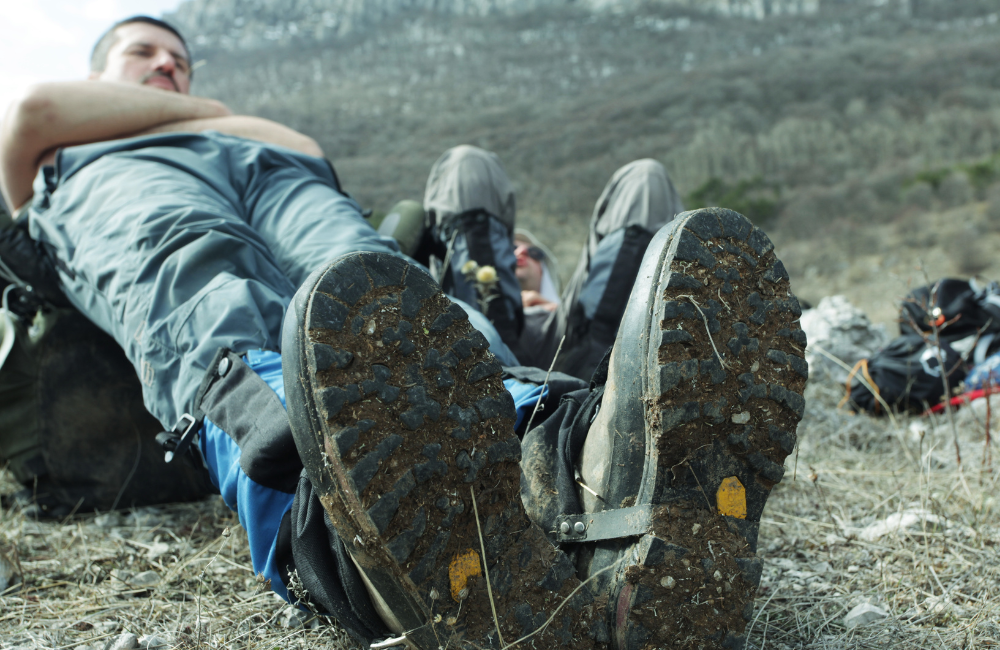
2. Footwear: The Foundation of Every Step
Forget everything else, but never this: your hiking boots are your most important survival gear.
I learnt that the hard way after tackling a rocky trail in cheap trainers. Every sharp stone felt like a dagger by the time I reached the car. Never again.
Look for hiking boots with good grip, ankle support, and waterproofing. Break them in before any big trip. You don’t want to discover a blister forming halfway up a mountain.
Pair them with proper hiking socks to avoid friction and hot spots.
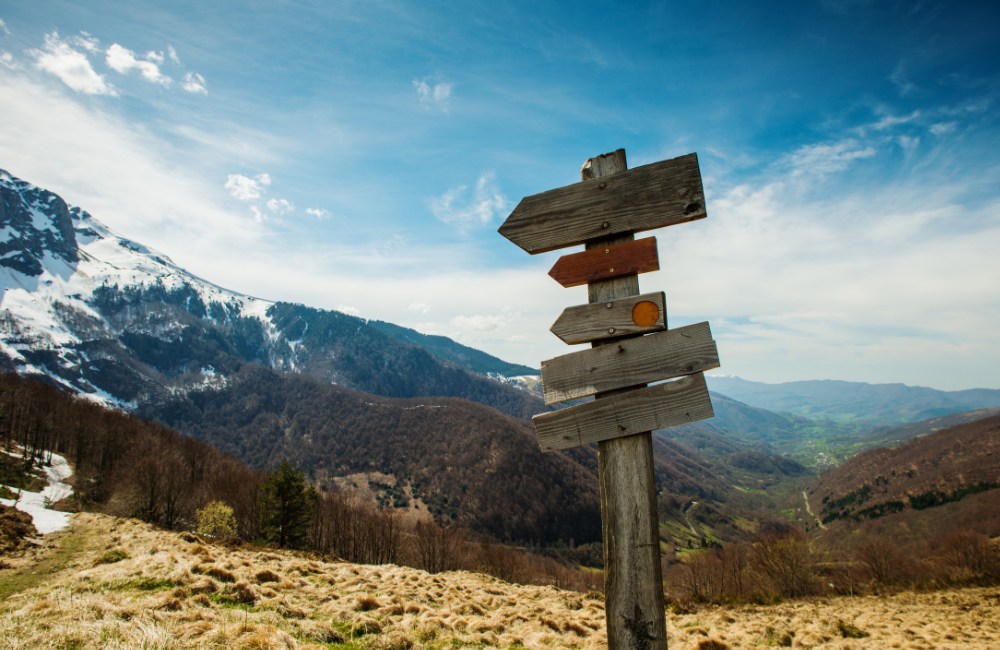
3. Navigation Tools: Map, Compass, Tech
If you’ve been following me, you know I love tech as much as the next hiker, but I’ve also watched my phone battery plummet from 80% to zero in the cold.
That’s why I rarely rely solely on digital maps. Besides, a paper map and compass weigh next to nothing, and they don’t need charging.
Learning to use them properly is one of the most empowering skills I’ve picked up.
Yes, GPS and hiking apps and devices are brilliant additions, but they’re backups, not replacements. Remember that.
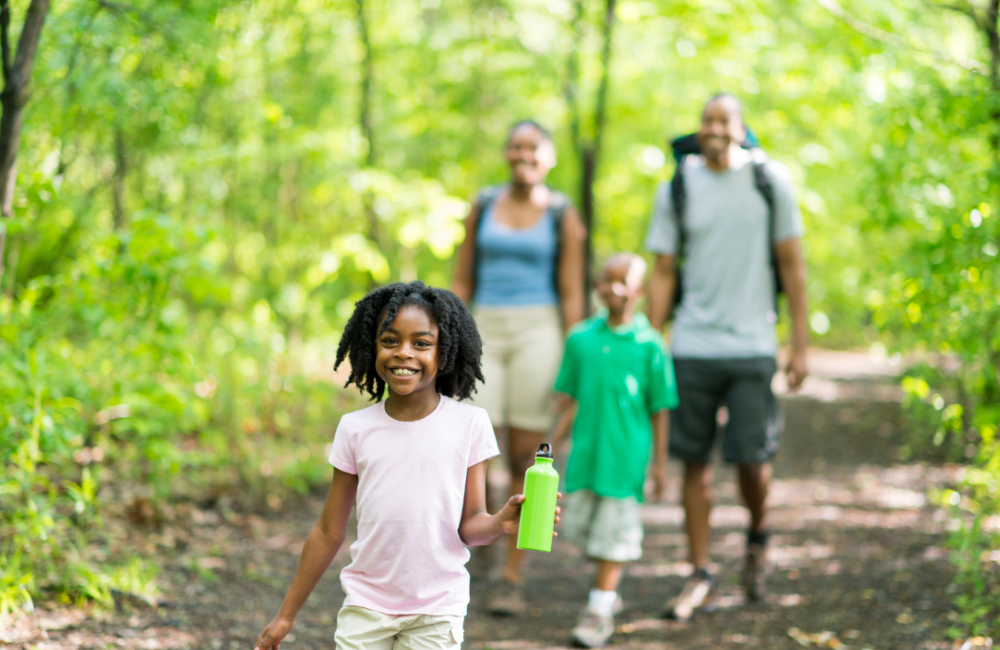
4. Water and Purification
Dehydration sneaks up faster than you think, especially on hot or high-altitude trails.
I always pack at least two litres of water. For longer treks, I carry a lightweight filter or purification tablets.
Streams and rivers are tempting, but drinking untreated water can end a hike with stomach cramps instead of summit views.
Hydration bladders are handy for sipping as you walk, but bottles are easier to refill and share. I usually bring a mix of both.
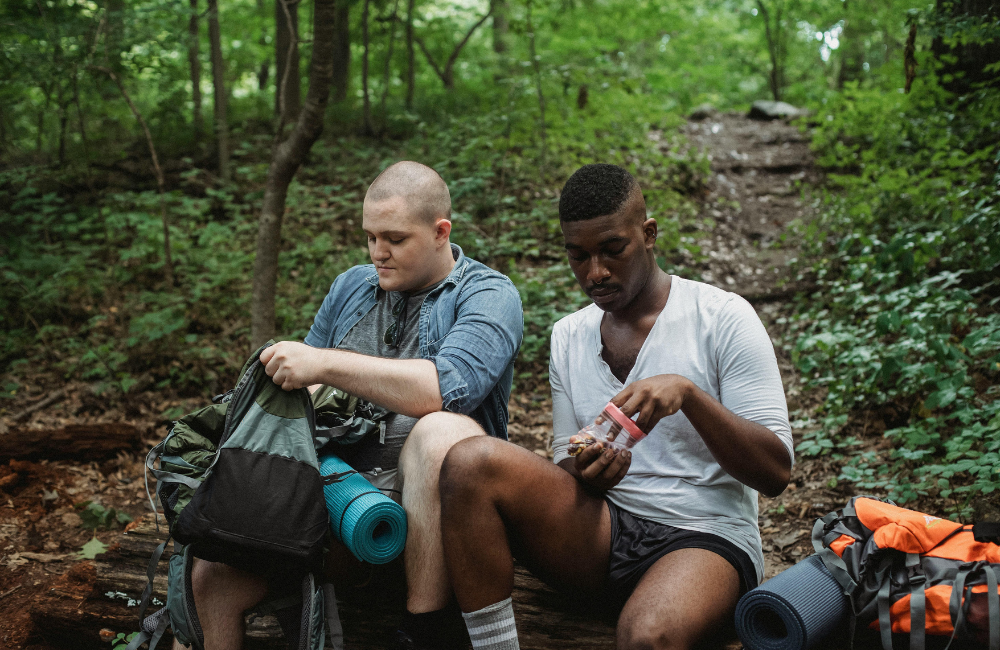
5. Food: Fuel for the Long Haul
As a diabetic, I’ve learnt the hard way that you can’t rely on “eating later” when you’re on a trail. Blood sugar dips don’t wait politely for the next rest stop.
I pack snacks that are lightweight, calorie-dense, and stable in different conditions. Trail mix, energy bars, and glucose tablets live in my pack. For longer treks, I throw in wraps or jerky for something savoury.
My Pro Tip: stash some “emergency jelly babies” somewhere in your kit. You’ll thank yourself when morale and glucose levels dip.
But there’s more to health than just some pick-me-ups. Let’s talk first aid kits, because no hiking survival kit is complete without one.
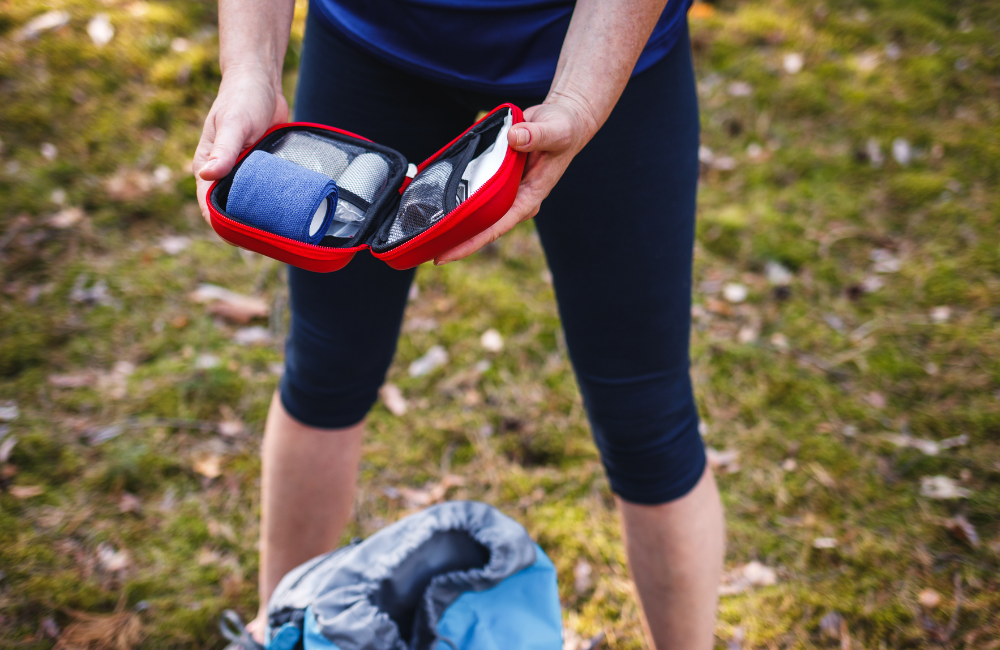
6. First Aid Kit
You don’t need to carry a hospital on your back, but a compact first aid kit is non-negotiable. Mine always includes:
- Blister plasters and tape
- Antiseptic wipes
- Painkillers
- Bandages and gauze
- Any personal medication (in my case, insulin, one or two replacement CGMs and test strips)
It’s not glamorous, but it’s one of the most used items in my pack.
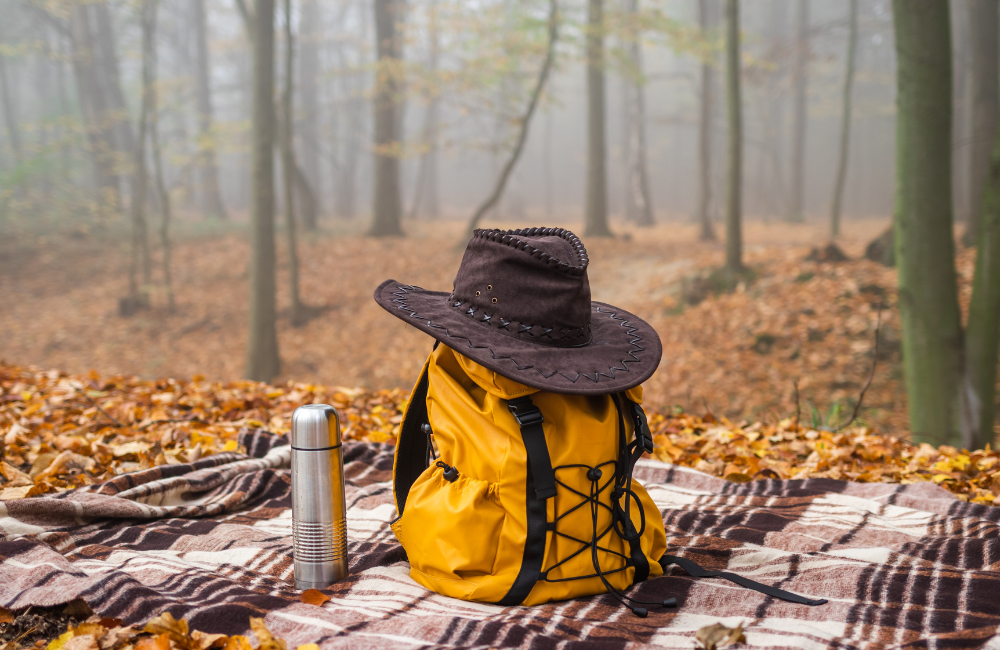
7. Shelter and Warmth
Even on a day hike, I carry a lightweight emergency bivvy or space blanket. Weather changes, injuries happen, and sometimes you just need extra warmth. They weigh almost nothing, but could mean everything if you’re stuck overnight.
A small, packable down jacket is another lifesaver. It’s been my best friend on chilly summits when the wind bites harder than expected.
8. Lighting: Headlamp Over Torch
Sunsets creep up on hikers. One minute it’s golden light, the next it’s pitch black under the trees. That’s why I always pack a headlamp, even for hikes I plan to finish in daylight.
Unlike a torch, a hiking headlamp keeps your hands free. Why does this matter?
It’s critical if you’re scrambling over rocks or need both hands for your map. Oh, and remember to pack some spare batteries too.
9. Tools: Knife and Multi-Tool
A small knife or multi-tool has endless uses: cutting rope, opening food, and even fixing gear on the fly. Mine has saved me from being stuck with a broken strap more than once.
I also carry a bit of duct tape wrapped around my trekking pole. It’s ugly, but it’ll patch a ripped pack or cover a blister in a pinch.
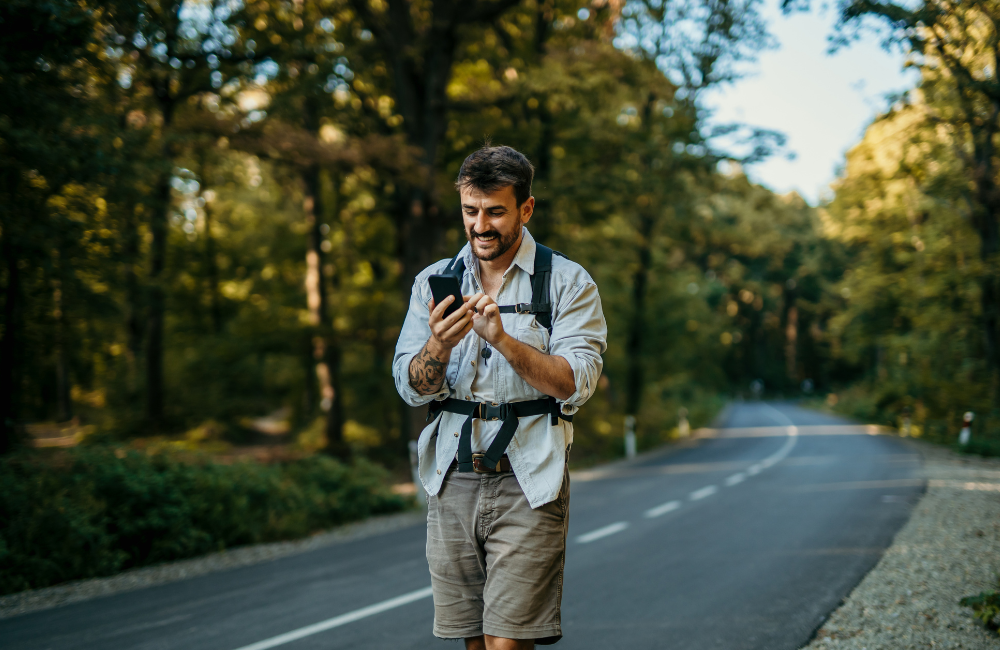
10. Communication and Safety
Phones are great, but signal isn’t guaranteed. If you’re heading somewhere remote, consider a whistle (simple, but effective), or even a personal locator beacon if you’re really out there.
I also leave my route with someone before I set out. It takes 30 seconds but gives peace of mind if something goes wrong.
Now, let’s wrap up my guide to packing the ultimate hiking survival kit with some handy extras to make your life easier.
11. Extras That Make Life Easier
Not essential, but they often feel like it:
- Trekking poles for knees on steep descents.
- Sunglasses and sunscreen (even in winter, snow glare is brutal)
- A lightweight sit pad. It’s pure luxury when stopping for lunch!
These items can turn a tough hike into a much more enjoyable one. Trust me.
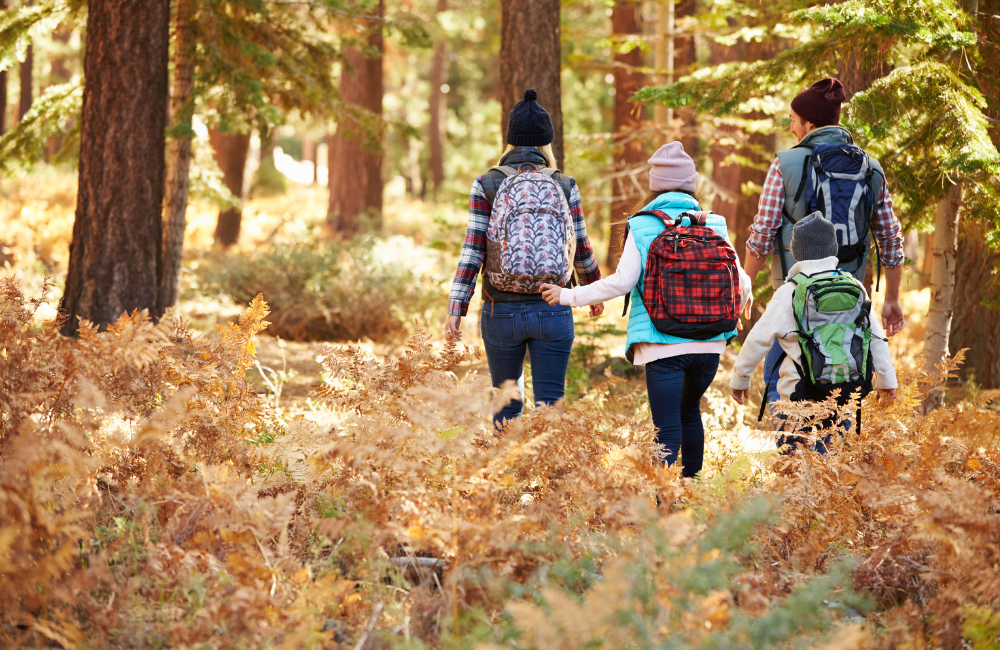
My Final Thoughts
And there you have it: Packing a hiking survival kit with the right gear lets you step onto almost any trail knowing you’re ready for whatever comes.
For me, that means carrying enough food for my diabetes, boots I can trust, and a mindset that balances adventure with caution.
Nature doesn’t hand out second chances, but it does reward preparation. Pack smart and pack light.

